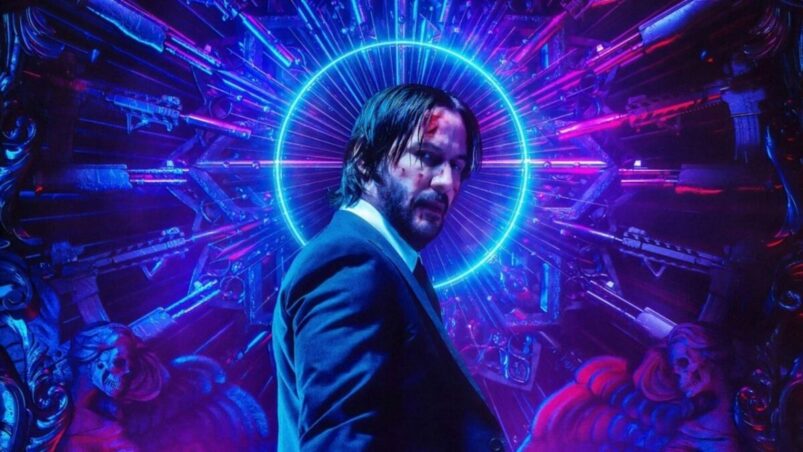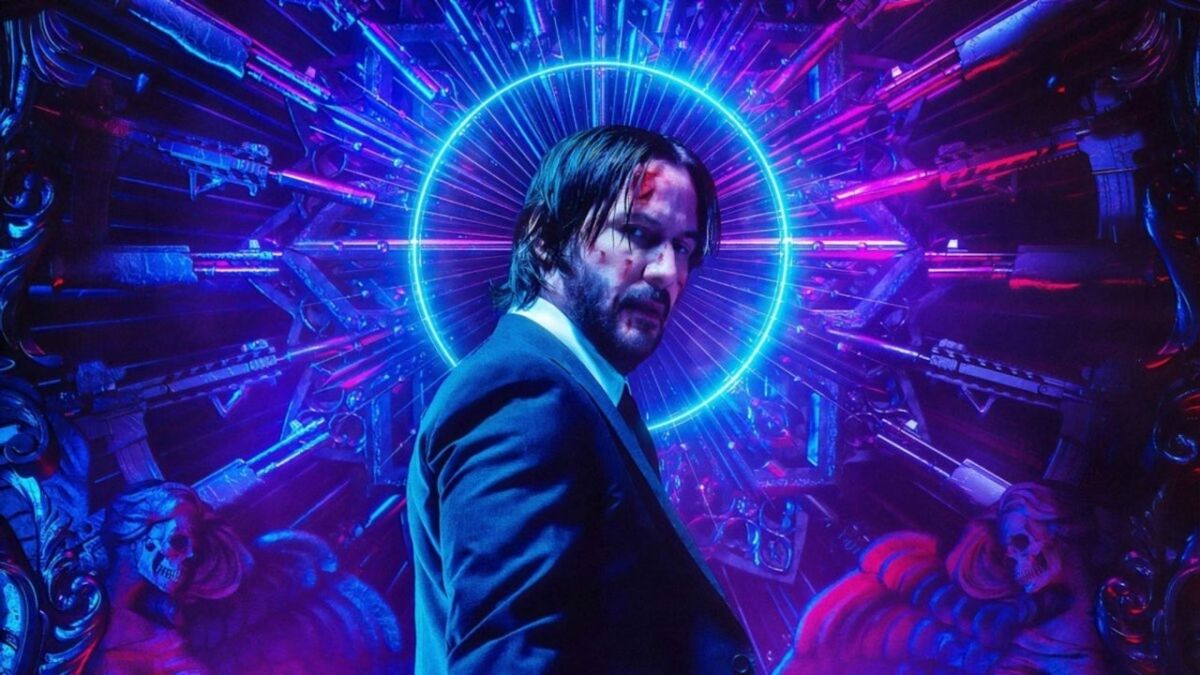John Wick: Chapter 4 is more than a full hour longer than the first film. Like chapters 2 and 3, it also includes clips from Buster Keaton films projected in the backgrounds of some shots to position itself in a lineage of movies that prize the artistry of the body. But where Chapter 4 really calls its shot on its own importance is when, less than five minutes into the film, director Chad Stahelski and editor Evan Schiff directly quote the iconic “match cut” from Lawrence of Arabia.
It’s an incredibly bold choice, but it’s clear that the creative team behind John Wick: Chapter 4 is confident in the awesomeness of what they have created. Usually that sort of self-importance would be off-putting, but in the case of John Wick, the team deserves to pat themselves on the back. The series began with perhaps the platonic ideal of a small-scale revenge-thriller action movie and has since grown into a downright mythological, globetrotting mega-franchise. Whether any of the sequels live up to the greatness of the first film is up for debate (I think not), but each one, including Chapter 4, delivers on truly astounding action scenes and gorgeously neon-lit tableaus, often at the same time.
Unlike the previous sequels which immediately drop viewers into high energy action sequences, Chapter 4 opts to build up a sense of how epic it will be. The first image and sound are a near deafening punch against a wooden board, and before we see the titular John Wick (Keanu Reeves), we’re taken on a journey through cavernous subterranean spaces with Laurence Fishburne’s Bowery King to properly develop hype. That hype isn’t just being built for the action that will come, but to properly alert the audience that John Wick: Chapter 4 is a victory lap.
The film recreates the most iconic action set-pieces from the three previous films over the course of its nearly three hour runtime. The first major action sequence is an assault on the Osaka Continental Hotel where the underworld characters of these films can seek shelter and services, recreating the finale of Chapter 3’s assault on the New York Continental. There’s a visually marvelous fight through a club that’s lifted from the first film, and just as the entirety of New York’s assassin community came after John in Chapter 2, we see Paris’s best come after him as he attempts to cross the city.
What’s amazing is that none of this feels stale. These are clear callbacks to the great sequences of the previous films, but at no point is there any sense that we don’t need to see this because we’ve seen it before. The choreography in Chapter 4 is just as viscerally thrilling and hard-hitting as anything that’s come before. The addition of martial arts legends Donnie Yen, Hiroyuki Sanada, and Scott Adkins (who is disappointingly and unnecessarily placed in a fat suit) also helps keep things feeling fresh.
Each of these new locations that are callbacks are also visually distinctive and highlight that the sets and lighting of these films are perhaps just as important as the fights. The Osaka Continental battle takes us through human-sized, bright white neon, squares that could just as easily be modern art as light sources (they may well be both), and traditional woodblock print art on glass that is of course shattered. The club includes indoor waterfalls that fracture light and add another layer of danger to the fights. And while New York is an iconic city in its own right, there may not be a more cinematic city than Paris with its multitude of landmarks, several of which are used as battlegrounds in the film.
But like the other two sequels in the franchise, Chapter 4 falls prey to the ever-expanding, overly complicated, and clunkily explained underworld these films inhabit. Chapter 4 in particular feels like the worst of the bunch narratively, as you can feel the story turning in on itself to deliver the next breathtaking action set piece. A narrative formed around set pieces isn’t a big problem for a movie built around delivering jaw-droppingly beautiful and brutal fights, but the writing becomes more distracting is in the introduction of two new characters who seem to exist only to set up spinoffs: Rina Sawayama’s Akira, daughter of Sanada’s character, and Shamier Anderson’s Tracker (aka Mr. Nobody).
Sawayama is fantastic as Akira but disappears from the film after the first act sets up an arc for her in a way that feels like it’s pulled directly from the MCU’s spin-off set-up playbook. Anderson is in the entire film, but the way his character exists parallel to the systems of power in the underworld makes him feel like a Boba Fett character just begging for his own one off stories to be told. Creating new compelling characters in an ongoing franchise is necessary, but we shouldn’t feel that their appearance is set up for something else.
John Wick: Chapter 4 is a sprawling victory lap for a franchise that has established itself as modern action royalty. But while the film’s action scenes and vibrant colors may be the best the franchise has delivered, its narrative messiness and awkward spin-off set-ups (whether they actualize or not) may make it the worst movie of the franchise. So the question becomes: are you watching John Wick: Chapter 4 as a narrative movie or a piece of purely visual art?
READ NEXT: 10 Best Animal Attack Movies to Watch If You Liked Cocaine Bear
Some of the coverage you find on Cultured Vultures contains affiliate links, which provide us with small commissions based on purchases made from visiting our site.


